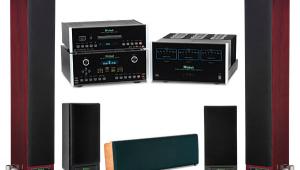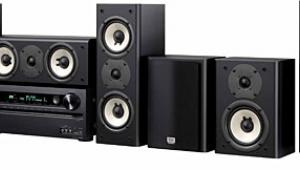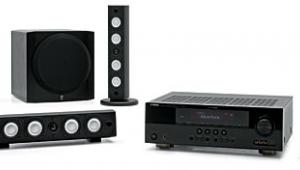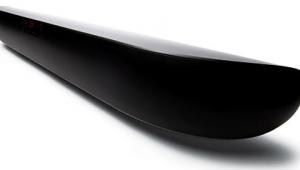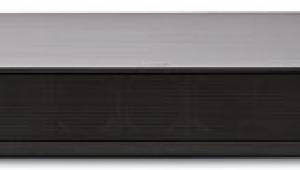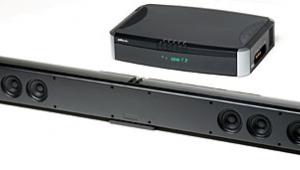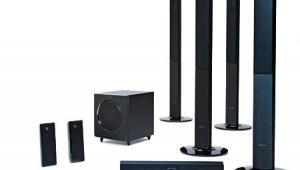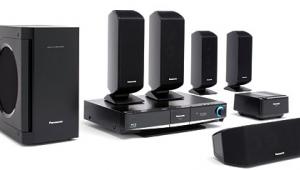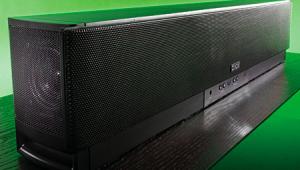What kind of room correction does this system use? Is it a parametric equalizer? A graphic equalizer with fixed bands? In any case, unless you're fortunate enough to be sitting at equal distances from each speaker this system probably sounds like crap. The system's room correction is probably a joke and likely doesn't correct anything. Distance settings alone or in combination with room correction that only operates in the frequency domain won't fix imaging problems caused by sitting off center.
Samsung HT-E6730W Home Theater System
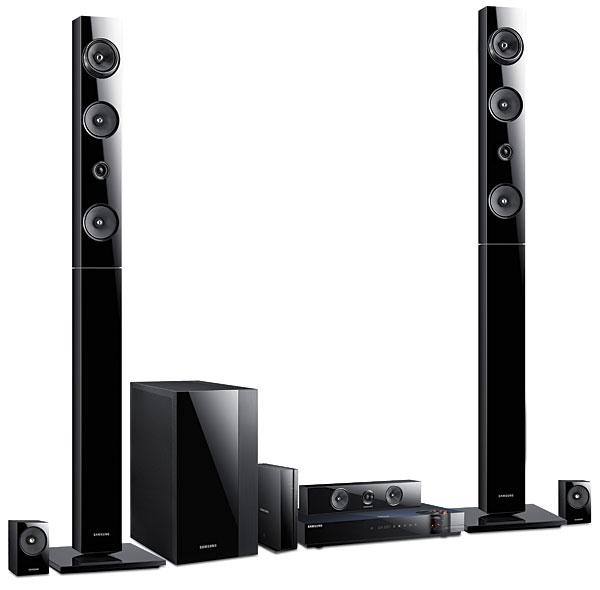
The vacuum tube has an honored place in the audio timeline. It preceded stereo, the LP, and of course everything digital. When tubes gave way to the solid-state transistor, consumer electronics began its steady march toward lighter weight, lower cost, reduced heat dissipation, and greater energy efficiency. Entire new product categories were born—such as the portable transistor radio, the distant forebear of today’s smartphones and iPods. Solid-state technology further democratized audio in the 1970s as Japan exported mass-market stereo receivers to music lovers on a budget. By the time home theater and surround sound got underway, tubes had long since been left behind by the mainstream. One by one, all the tubes winked out. Or did they?
Deep in the man caves of two-channel stereophilia, tubes continued to glow. Some audiophiles never quite gave up on tubes, subjectively luxuriating in their benign second-order harmonic distortion in much the same way they preferred the warm feeling they got from the sound of spinning vinyl. Collectors prized classic tube amps by the likes of McIntosh and Marantz. As the new audiophile revolution began in the 1980s, companies like Audio Research, Vacuum Tube Logic (VTL), and Conrad Johnson resurrected the popularity of the tube amplifier and raised it to new heights of performance.
In the 21st century the vacuum tube is resurgent and diverse. In addition to the classics mentioned above, audiophiles serenely contemplate sexy low-powered triode tube amps by Shindo, affordable tube amps by Jolida, headphone tube amps by Woo Audio, tube phono preamps like my little Bellari VP530, and computer-hip hybrid tube/solid-state amps like the Peachtree Audio Decco2 that sits on my desk. But who is that pounding on the door? It’s Samsung, which has proudly unveiled the first compact surround system to feature vacuum tubes.
Tyger! Tyger! Burning Bright
The official name of the product is the Samsung HT-E6730W Blu-ray 3D 7.1 Home Theater System. Switch it on, and a pair of tubes begins glowing behind a front-panel window. In addition to the tube-assisted A/V receiver and Blu-ray player built into a single low-rise chassis, it also includes two tower speakers that handle left, right, and height channels; plus a horizontal center, two surround satellites, and a subwoofer.
Readers who are good at counting will have noticed that this 7.1-channel system has only 5.1 speakers. The extra two channels are not back surrounds. Instead, front-height channels are built into the front left and right towers. The full-range height drivers can be tilted to face forward, directly at the listener, or upward, firing over the listener’s head (I chose the latter to maximize the height effects).

The remainder of the towers are devoted to a woofer-tweeter-woofer configuration that is echoed in the horizontal center. The surrounds, like the front-height channels, utilize a single full-range driver, which allows them to be almost impossibly tiny. They feed off a dedicated wireless receiver/amp (more about that later). All tweeters in the system utilize 0.63-inch silk domes. The remaining drivers—which include both woofers and full-range drivers—vary in size but are roughly 3 inches, with shiny phase plugs. In lieu of the polypropylene cones used in previous Samsung systems, they are now glass fiber, a tougher material.
From left to right, the Blu-receiver’s front panel includes a disc drawer, touch-sensitive controls, and the tube window, which exposes its contents on both the front and top panels. Tubes can serve audio products in several ways, including output power amplification and low-level preamplification. In this case, the tubes are said to operate in the preamp stage, and only on the two front main left and right channels, which Samsung (in response to our query) says are converted from digital to analog “using Samsung’s patented technology that minimizes D/A converting error.” The amp stage uses solid state switching amplification, making this a hybrid product. All amplification, aside from the rear surround channels, is built into the Blu-receiver, including the subwoofer’s amp channel. Although the claimed total peak power rating of 1330 watts looks enormous on paper, total power consumption for the system (7.1 channels plus disc drive and wireless transmitter) is rated at just 178 watts, no more than an extra-strong incandescent reading lamp. [Editor’s note: our bench tests following Mark’s evaluation showed that, with two channels driven, the switching amplifier pumped out 46 watts per channel into 8 ohms with .2% distortion—RS.]
Assembling and wiring the system will tax no one’s patience or dexterity. The towers come in three pieces: the driver array, a same-sized blank pedestal, and a heavy base. Threading the already-attached cable from the pedestal through the base is easy. The driver piece plops onto the pedestal with electrical contacts in place. Bolt the three pieces together, and you’re done. The other speakers require no assembly. The supplied speaker cable’s soldered tips fit easily into tabbed spring-loaded wire clips on the speakers and sub. At the receiver end, the cables are wired into color-coded plugs that naturally find their way into matching color-coded jacks on the Blu-receiver. For wall mounting, keyholes are molded into the plastic enclosures of the center and surrounds.

Samsung’s Auto Sound Calibration feature is an old nemesis of mine. This was my third and most pleasant experience with it. In the past it has stubbornly insisted that I hook up 7.1 speakers though my preference is 5.1 (spurning back surrounds). In this case, however, the extra two channels were for height and were built into the tops of the towers, an arrangement I had no desire to circumvent. So I just let the system set itself up the way it wanted to. The mock-musical test tones sounded less harsh than before.
Connectivity is minimal. The back panel includes two HDMI inputs, one stereo analog input, one HDMI output, and one composite video output. Additional jacks accommodate the supplied iPod dock, Ethernet, FM radio, and the card for the wireless-surround-speaker transmitter. There’s an iOS-compatible USB jack. The system also communicates via Wi-Fi or Ethernet with a router-connected PC.
To spare you the hassle and aesthetic challenges of running speaker cables from the Blu-receiver to your surrounds, Samsung bridges the distance wirelessly. The Blu-receiver becomes a wireless transmitter when you plug a small card into the back panel. A dedicated wireless receiver sits in the back of the room, where it feeds the surround speakers via cables (aha!). The wireless receiver needs a power connection to drive the amplifiers for the speakers (aha again!). Pairing the transmitter to the receiver required no button pushing, flashing lights, or waiting game—I just plugged it all in and the Auto Sound Calibration recognized the surround speakers as if they were old friends.
- Log in or register to post comments


Absolutely cool speakers.Thank you for sharing this info.

This article provides an interesting look at the Samsung HT-E6730W home theater system, which combines modern technology with warm vacuum tube sound! Try out the slope ball game for more fun!

